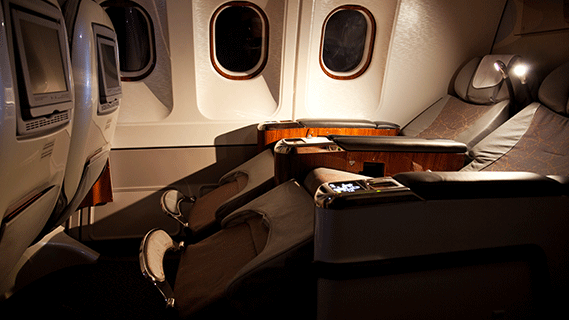Between tightening budgets and Google Flights taking off, OTAs and metasearch companies need to get creative to compete.
Companies of all sizes are spending less and selling less and having to employ creative strategies to push their brands forward with smaller budgets. Just having come off of the Phocuswright conference, we saw TripAdvisor lost $1 billion as its stock had the largest single day drop ever. At the same time, Expedia and Priceline are spending less with Google and looking to get more traffic organically and Trivago and TripAdvisor have seen advertisers spending less with them and have slashed ad spend themselves.
At the same time that purse strings are tightening, Google Flights boasts the top monthly visitor count of metasearch sites (its unique monthly visitors more than doubled from the first half of 2015 to the first half of 2017) and its effectively removing OTAs and other metasearch sites from the equation and engaging airlines in a new direct advertising platform. While metasearch sites and OTAs are buying traffic, Google Flights is capturing a larger share working directly with airlines and dominating referral conversion. OTAs are capturing just over 20% of Google general search traffic on flights keywords whereas on Kayak OTA capture 60%+ of referral traffic. This topic was discussed at length at Phocuswright and the stats presented were pretty eye opening as to just how much of a force Google Flights is to be reckoned with.
The US domestic budget conscious travelers go basic while travelers to/from Asia splurge on premium seats.
We saw an interesting dichotomy in 2017 as more basic and more premium offerings both became available to student travelers on our site for the first time.
Some travelers gravitated to the cost savings of booking “basic economy” fares, even despite the fact that no seat selection and change/cancellation are possible and these passengers don’t have access to the overhead bin. According to a survey we did in May, 64% of students book the cheapest fare they can find and would consider booking basic economy fares if they were the cheapest. In the first few months they’ve been offered on our site, 12-15% of our domestic bookings are now basic economy bookings. Given that U.S. fares are predicted to rise next year, we see these fares continue to be adopted by domestic travelers who don’t mind the limitations, especially as more and more students become familiar with them (as of May, 19% of students we surveyed were aware of them).
At the same time, we started selling premium economy (with 25 partners) and business class and first class tickets (with 65 partners) on our site for the first time. Searches for these tickets began as soon as they went live on our site. Students who value airline amenities (largely international students) are willing to pay for the comfort and service. Asia has dominated thus far, making up 51% of premium cabin searches (compared to 33% of overall site searches) and 46% of premium cabin bookings (from the US to Asia). As more students become aware of the inclusions of these tickets relative to the price difference, we expect more bookings to/from Asia to be premium economy in 2018.
Student travelers increasingly booking to regional airports vs. main hubs to save big.
When looking at our top destinations students travel to from the US, we’ve seen increases in bookings to regional airports while bookings to the main hub airports fell YoY during the same period (June-November 2017 vs. 2016).
For example, as bookings to JFK airport in New York fell 7.66% YoY, bookings to LaGuardia (LGA) airport increased 21.94% during the same period; as bookings to O’Hare International Airport (ORD) in Chicago fell 1.22%, bookings to Chicago Midway (MDW) rose 82.76% over the same period and as bookings to London’s Heathrow Airport (LHR) fell 22.89%, flights into London City Airport (LCY) increased 96.88% and to London’s Southend airport (SEN) rose 200% in the same period.
By traveling to a regional airport, travelers to New York saved 45.5%, Chicago saved 9.7% and to London saved 49.2% to LCY and 81.5% to SEN. These costs savings are significant, and educated consumers are weighing all options before booking.
Past purchase behavior is better leveraged to tell consumers what they want next (before they may even know).
Data and technology will become even more valuable to enable better interaction between brands and customers. You have to take what you know about the customer and use that understanding to provide more value than anyone else. This holds true for any internet company now – but in travel it’s even more powerful because of how much potential we have to customize experiences. Using a traveler’s past purchase behavior and current trends, we can create a profile and anticipate what they want before they even know they want it.
We’re looking at how we can provide a user who’s visited our site a certain number of times with a custom-tailored itinerary. We bring the consumer in when they’re still deciding: ‘Am I going from the US to London to study there? Am I going from China to the US?’ We already know a lot about them based on their search behavior, what can we do to show them exactly what they are looking for, to eliminate the need for them to continue searching? It’s about playing a central part in the consumer’s decision making process from start to finish, and beyond. Then, we continue to work with them and have ongoing communication, even when they’re past the purchase stage.
International students pick up domestic travel & popular destinations shift.
International students are increasingly taking advantage of the opportunity to travel around the US, and we see this trend poised to continue. In the last 6 months, international students (non-US-passport holders) traveled more domestically than internationally. While 43% of international students traveled within US in 2016, 53% did in 2017.
Amongst our Chinese student audience in particular, US domestic travel is up 21% YoY. Chinese students are also flocking to the Caribbean (with US to Caribbean travel up 63% YoY) and exhibiting an increased sense of adventure (specifically traveling to destinations that don’t require an additional visa once they are in the US).
When it comes to destinations increasing in popularity:
- Within the US, Washington sales increased 37% YoY and Charlotte increased 56% YoY over the last six months
- Sales to San Jose increased 75% over the last 6 months YoY
- Travelers from the US to Europe are increasingly traveling to Amsterdam (up 23% YoY), Lisbon (up 85% YoY) and searches for travel to Athens increased 175% YoY over the last six months
- Travelers from the US to Ho Chi Minh City are up 40% YoY over the last six months
We look forward to continuing to adapt with the market changes and student demands, overcome the challenges ahead of us and have another great year in 2018!

